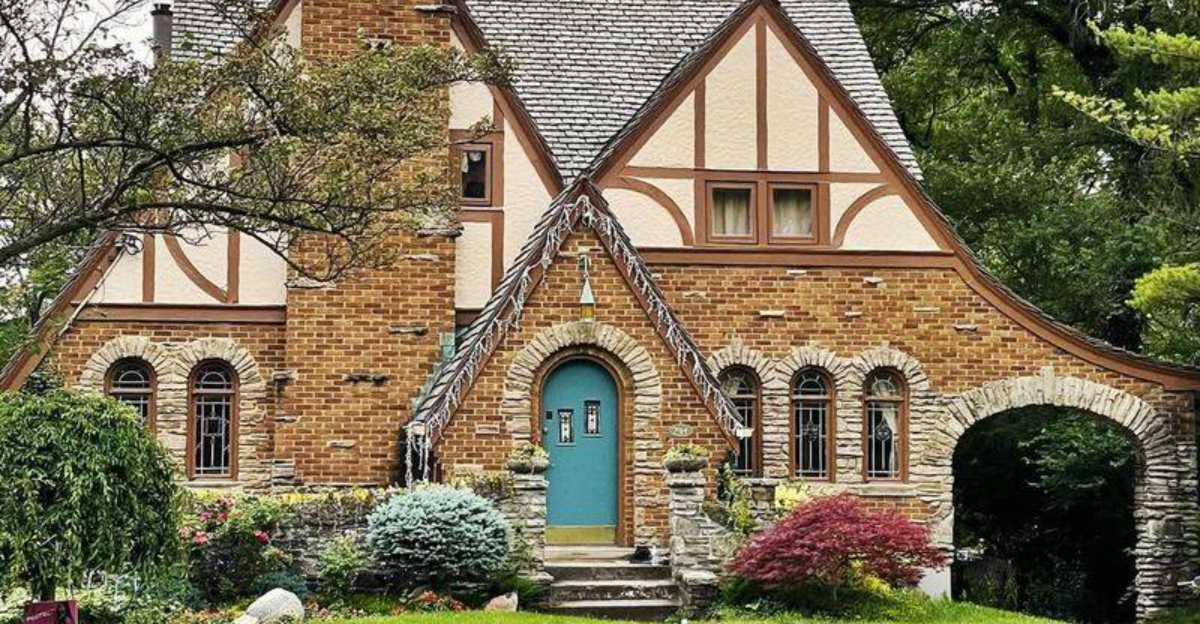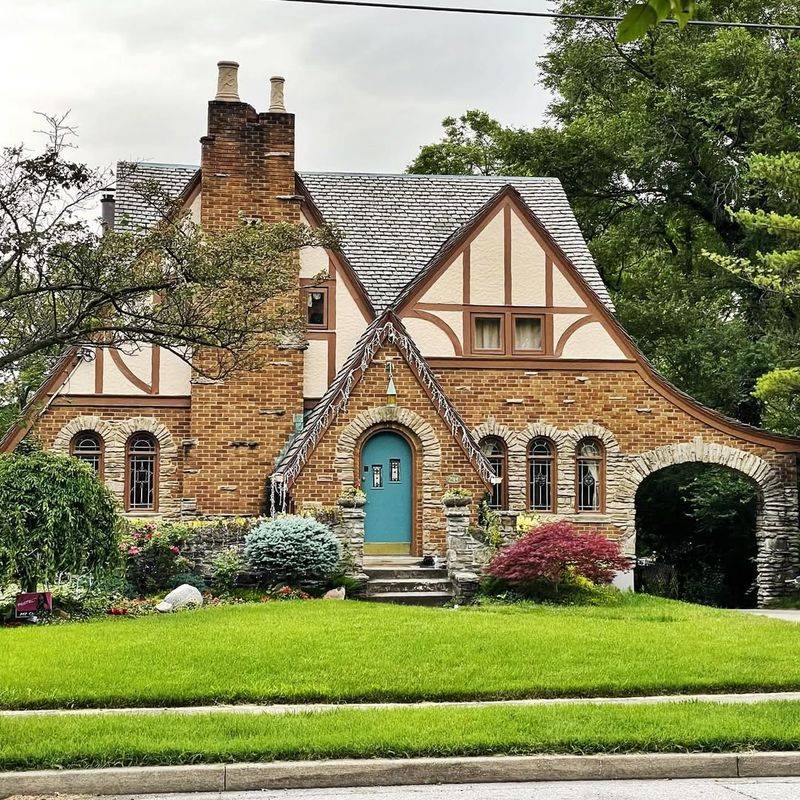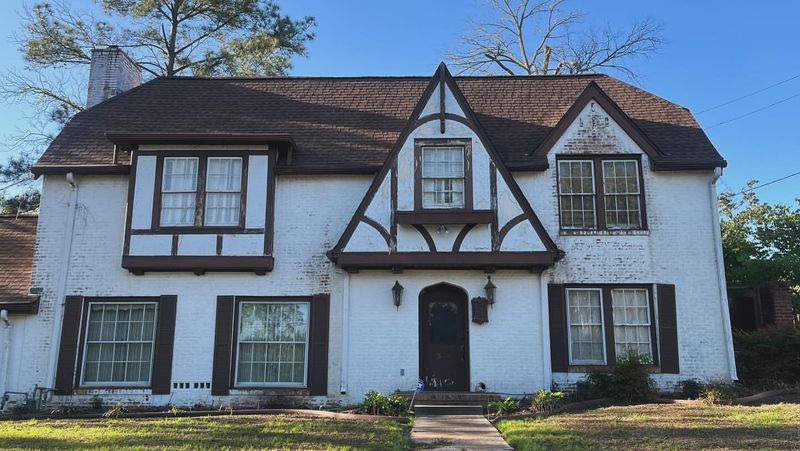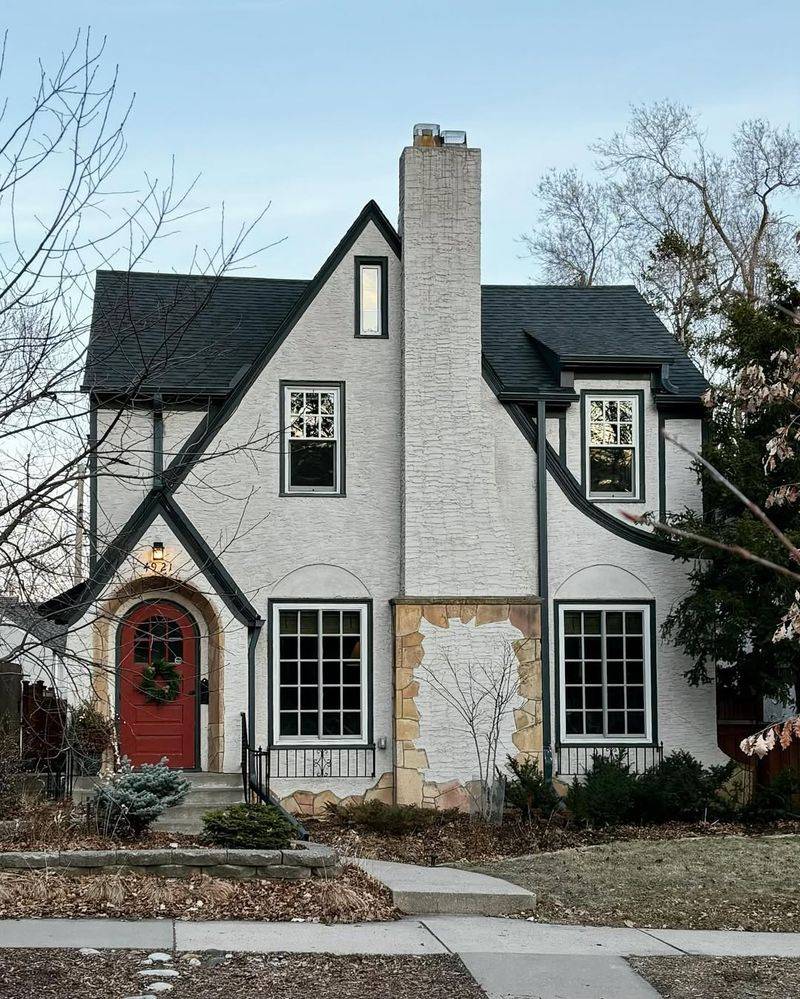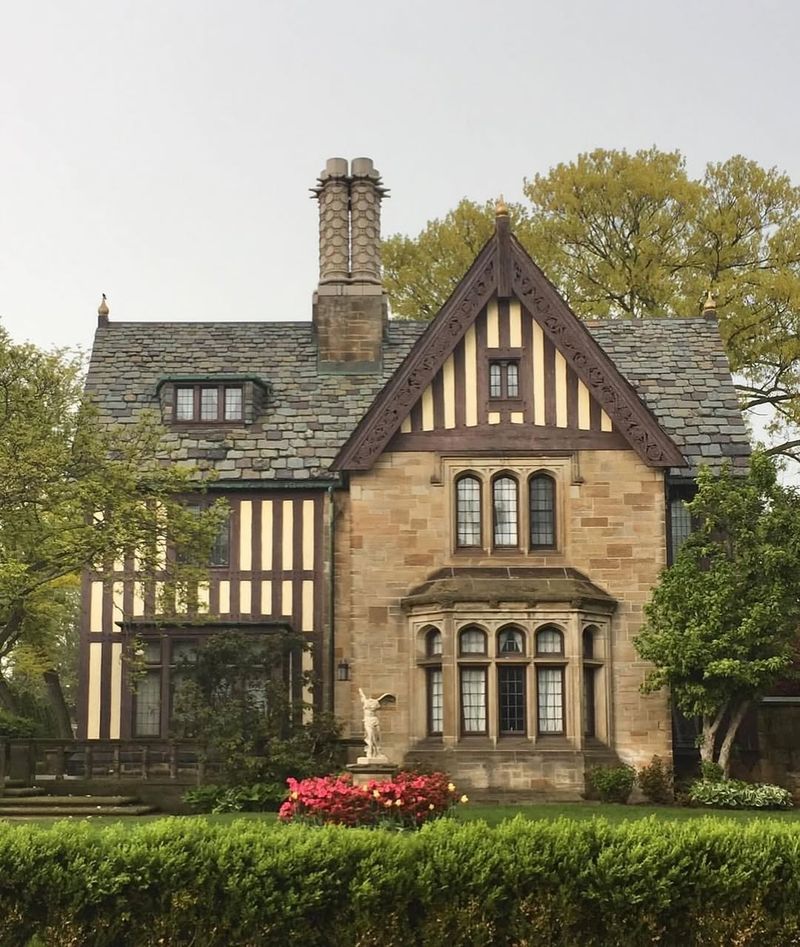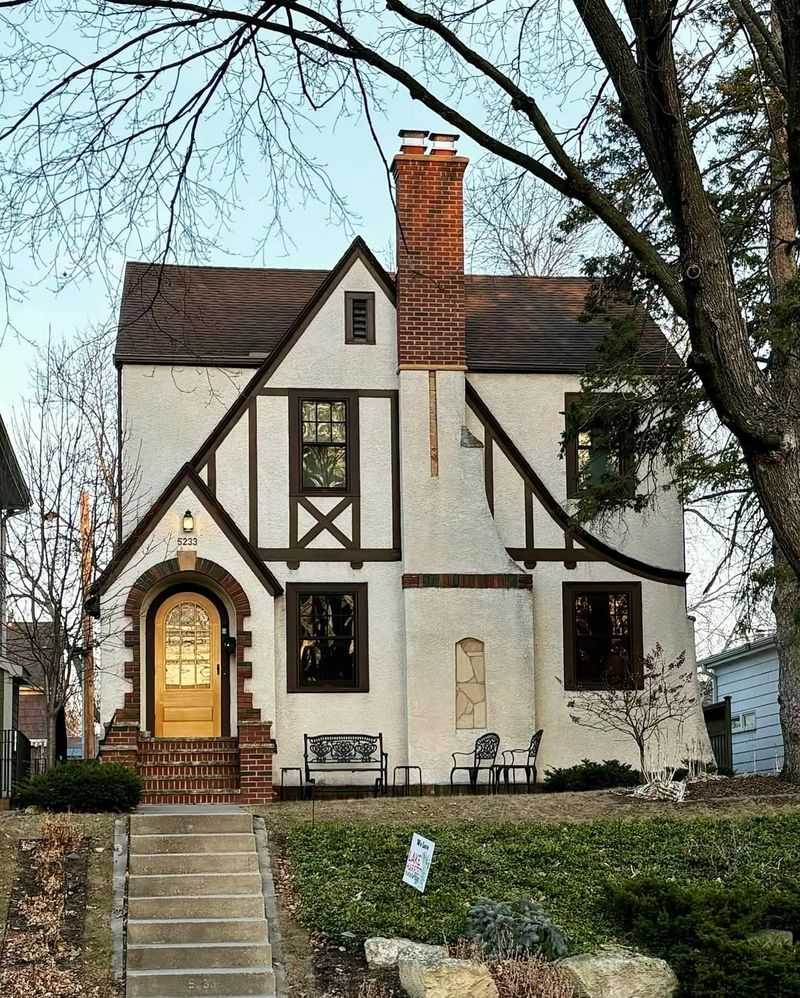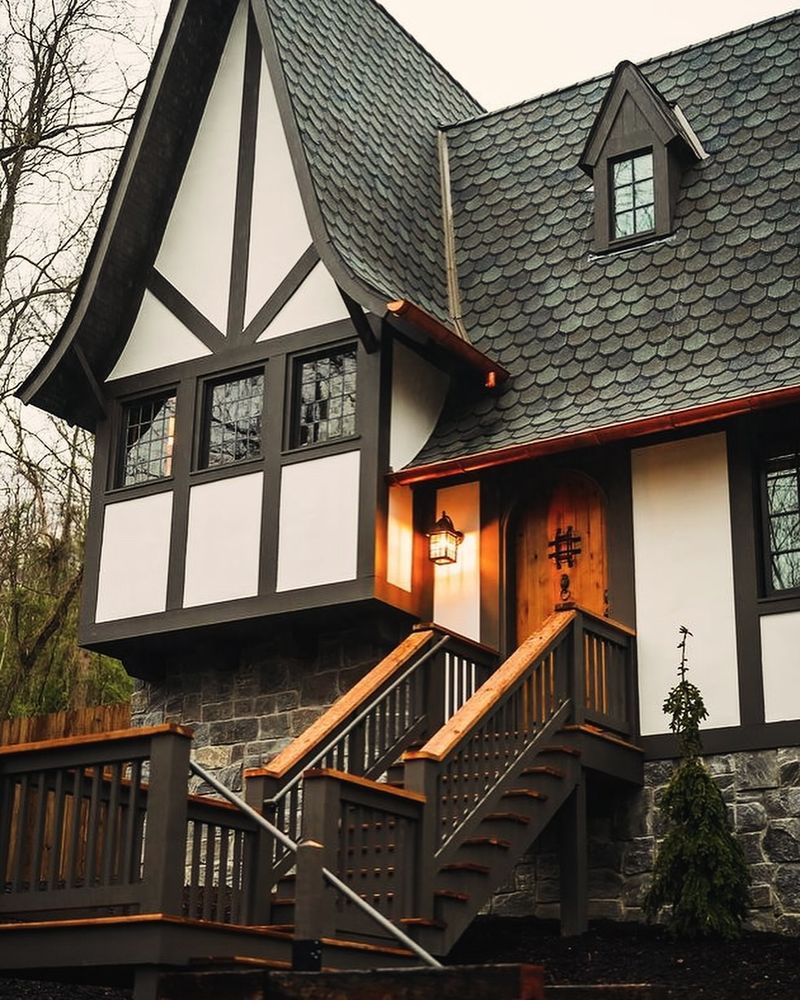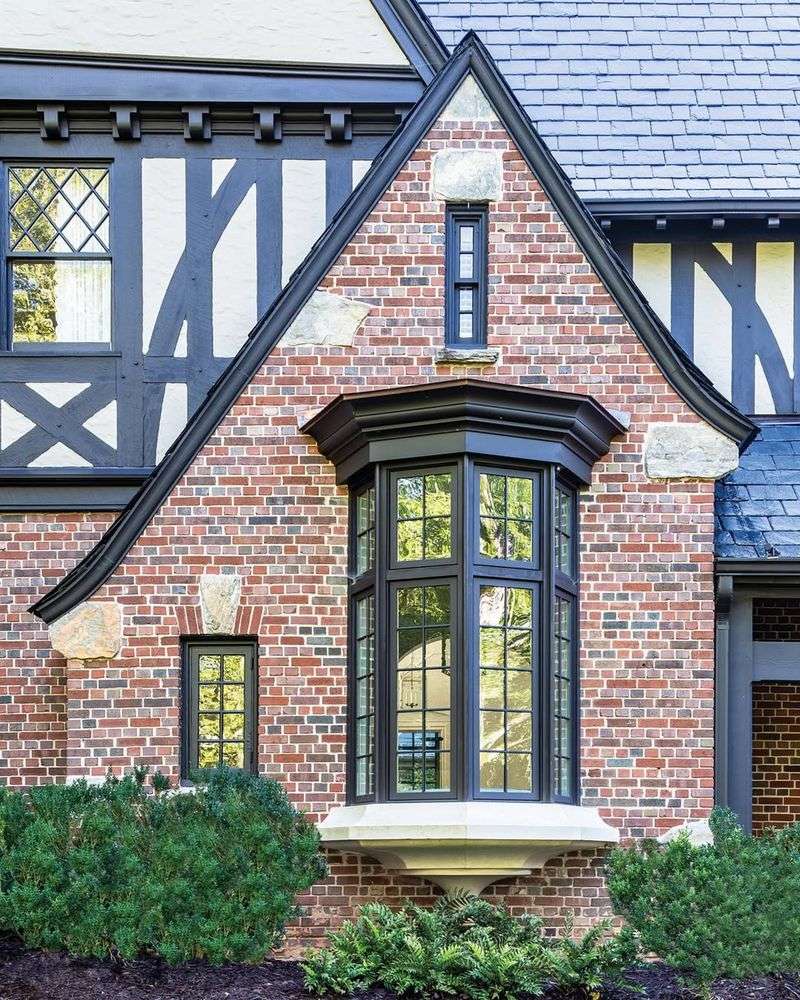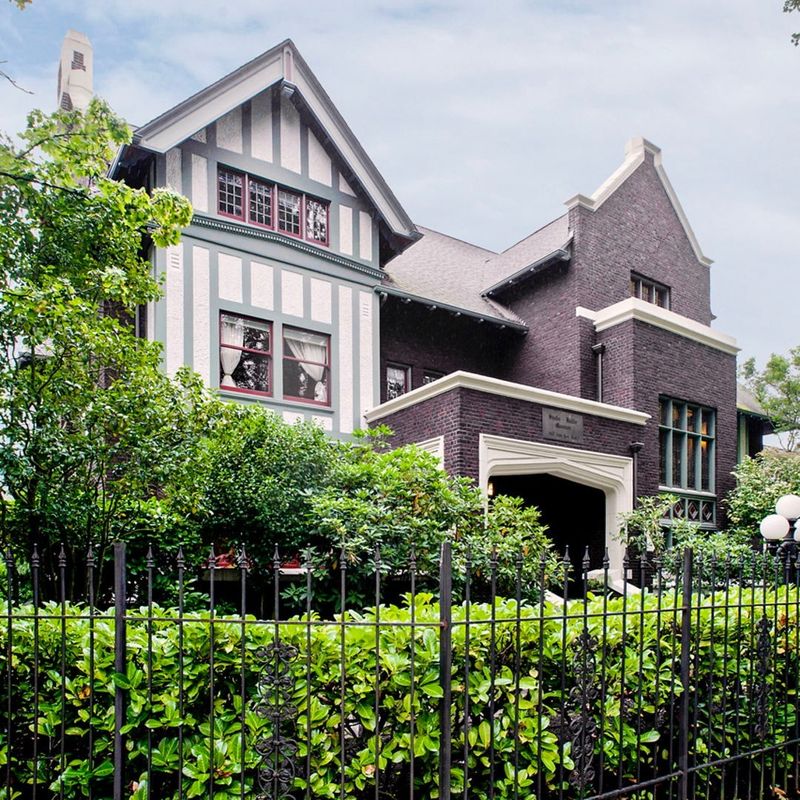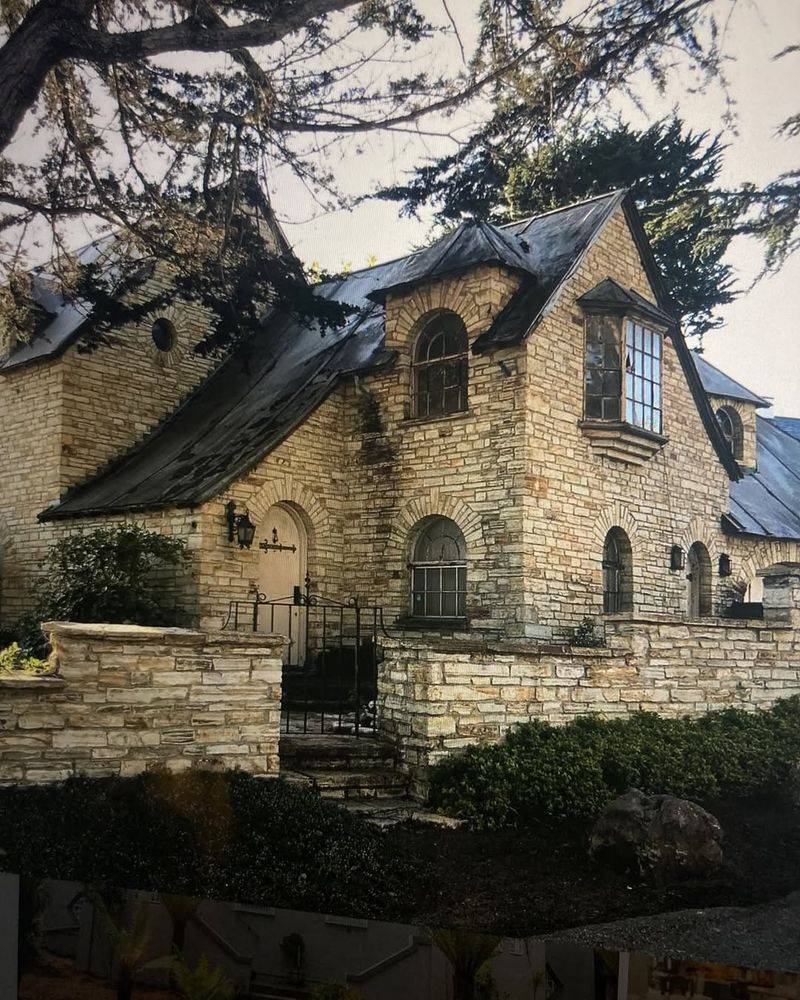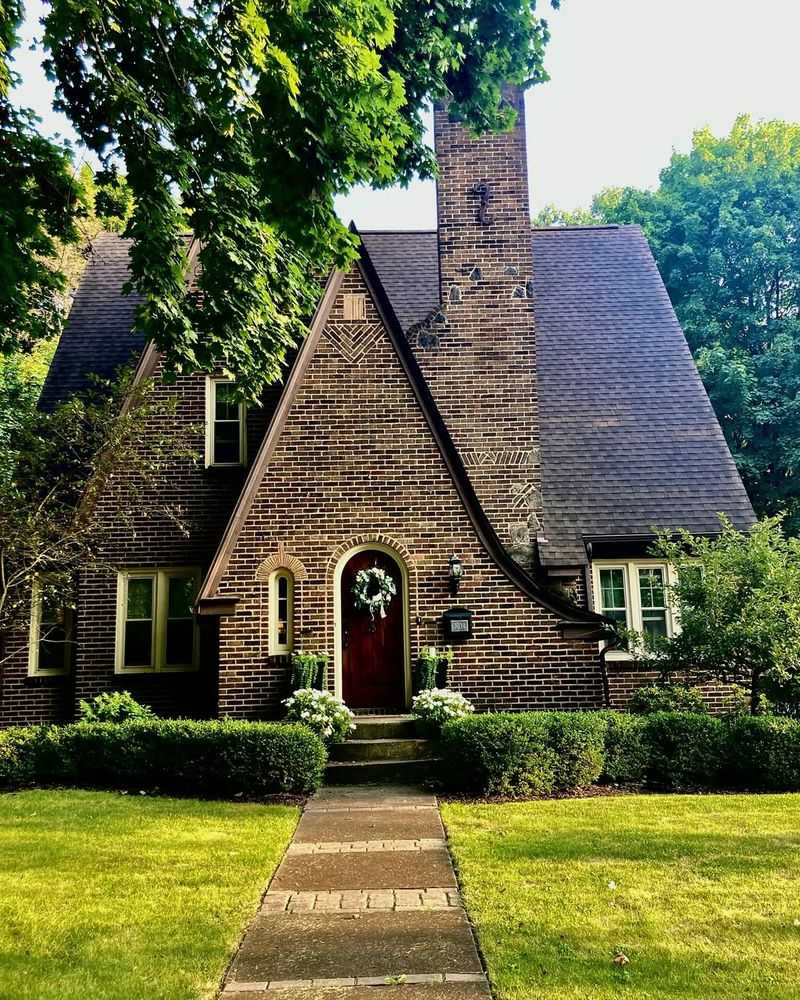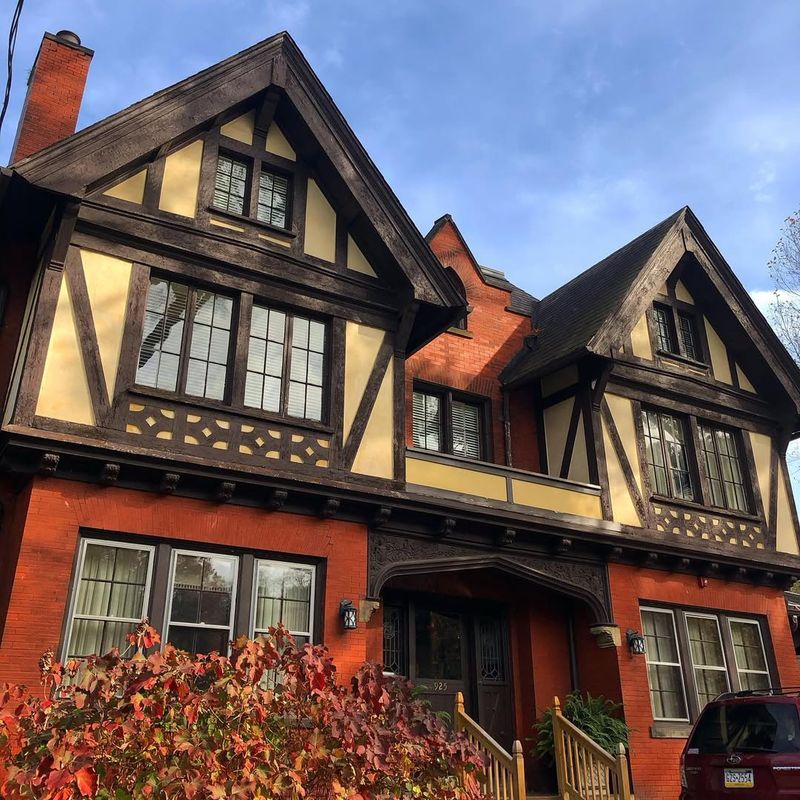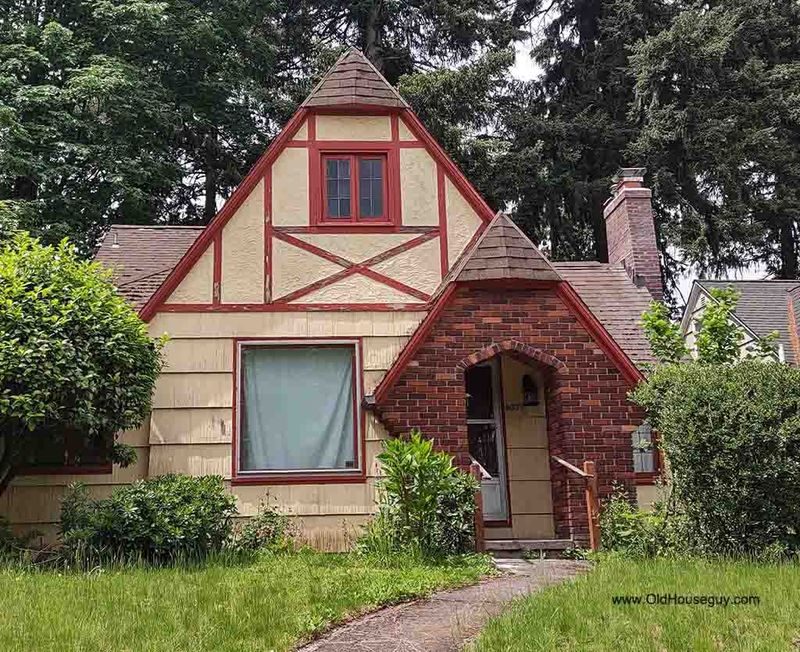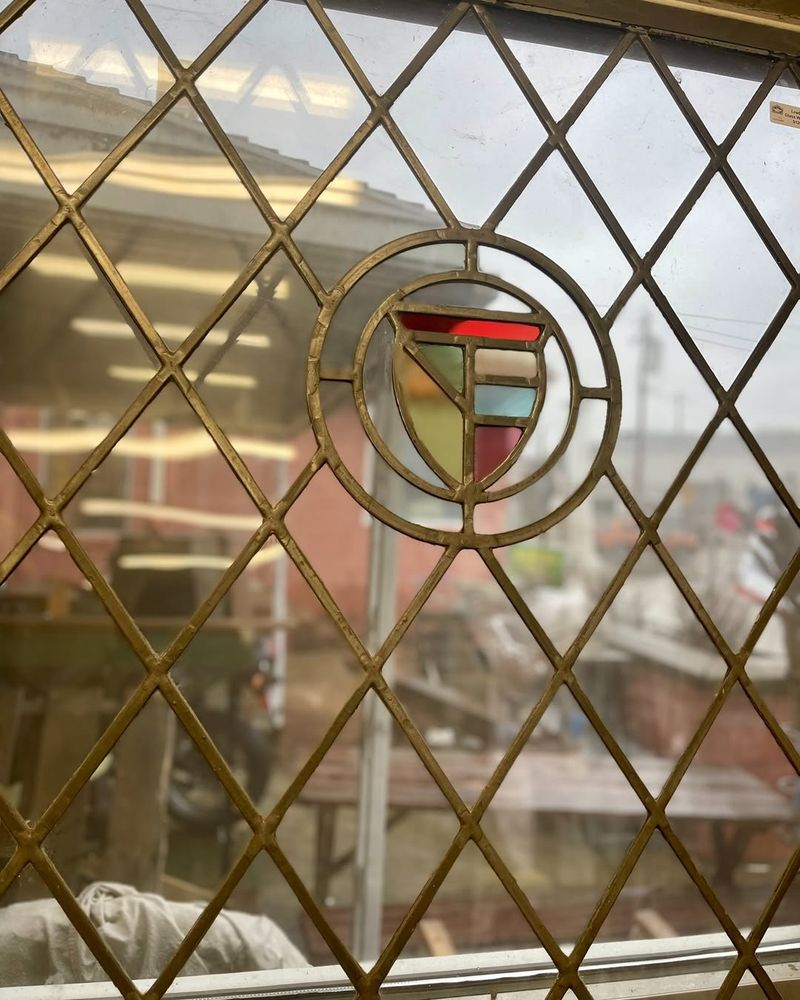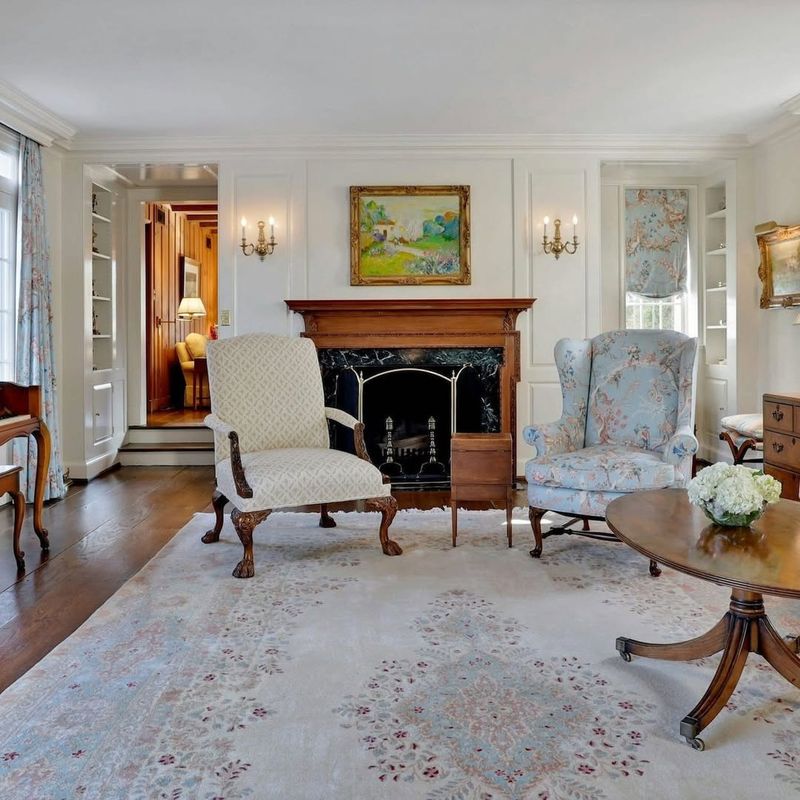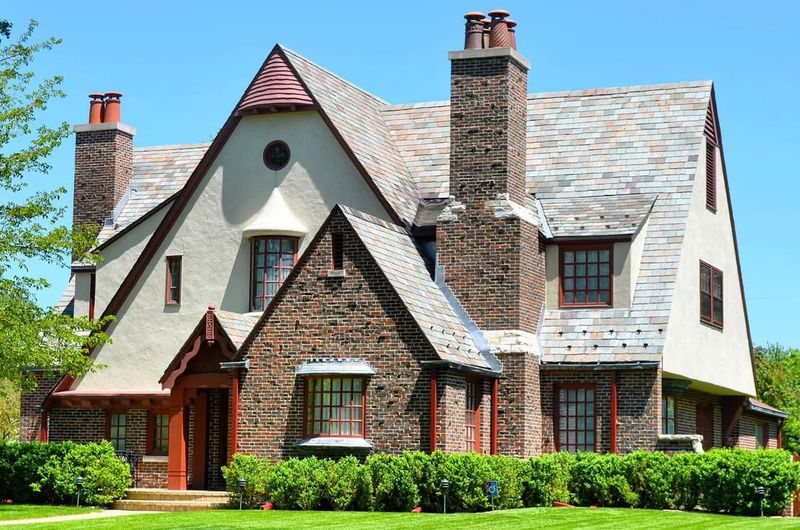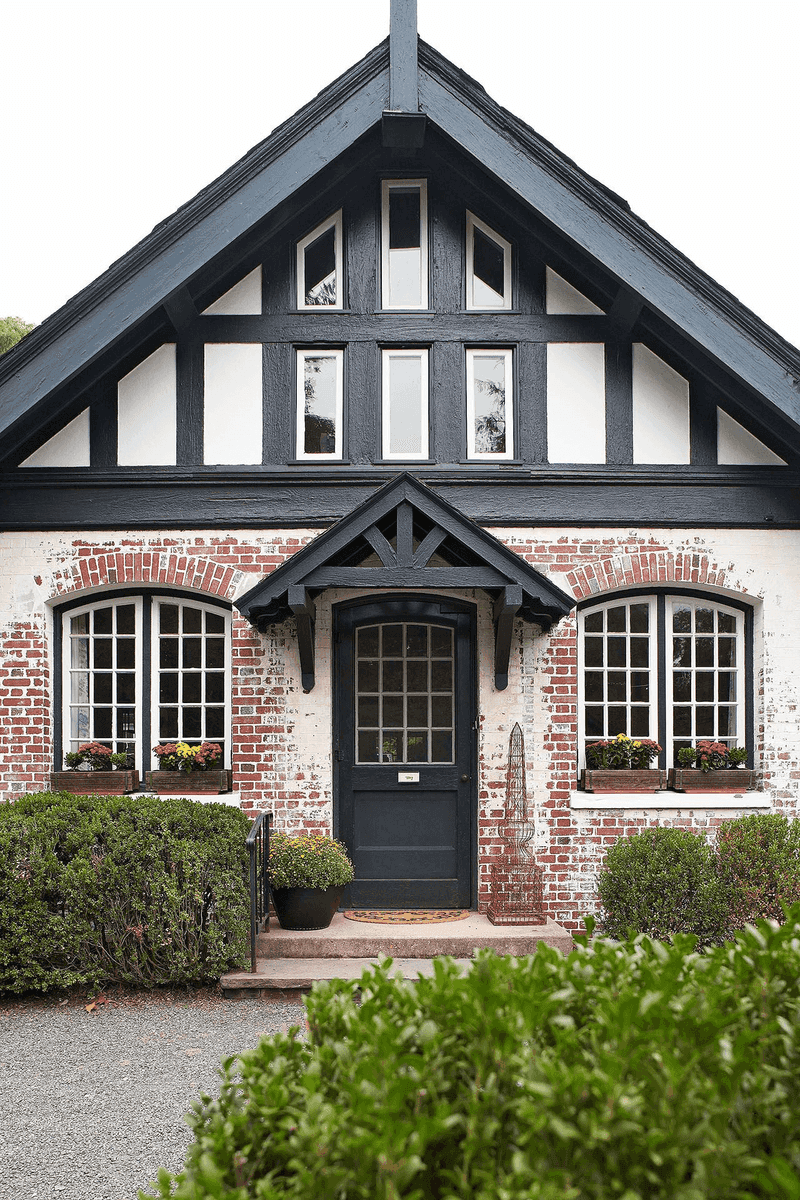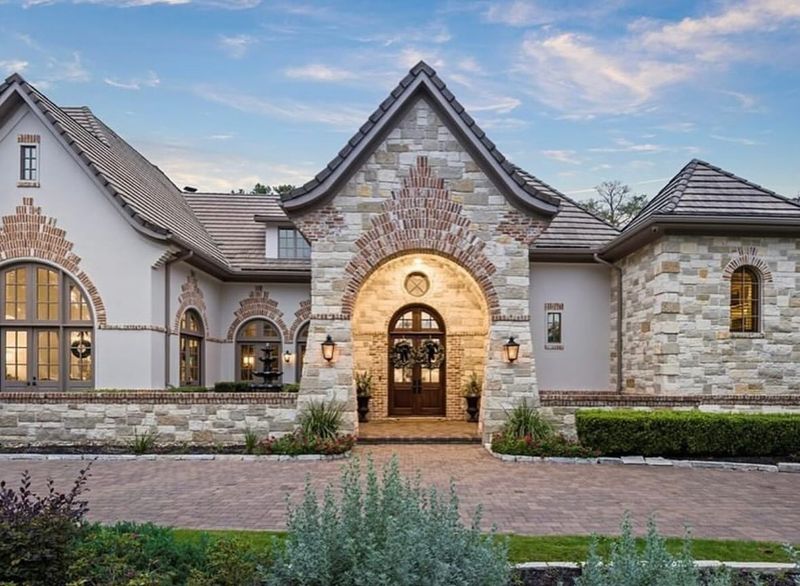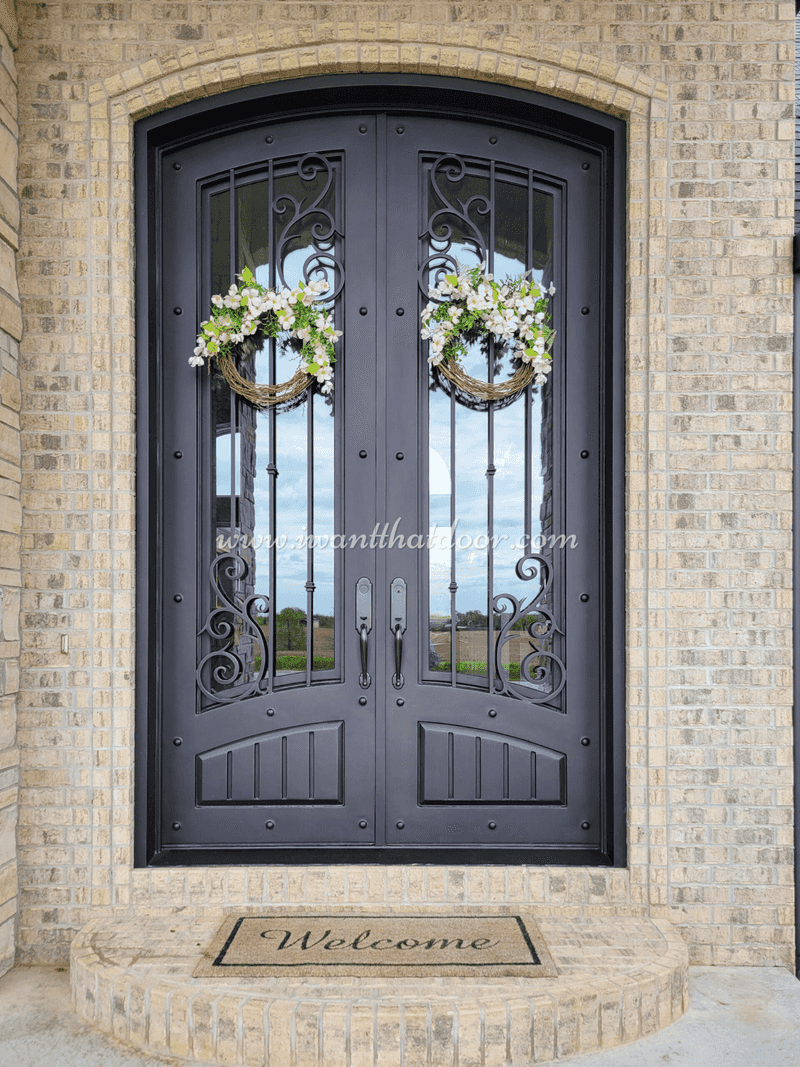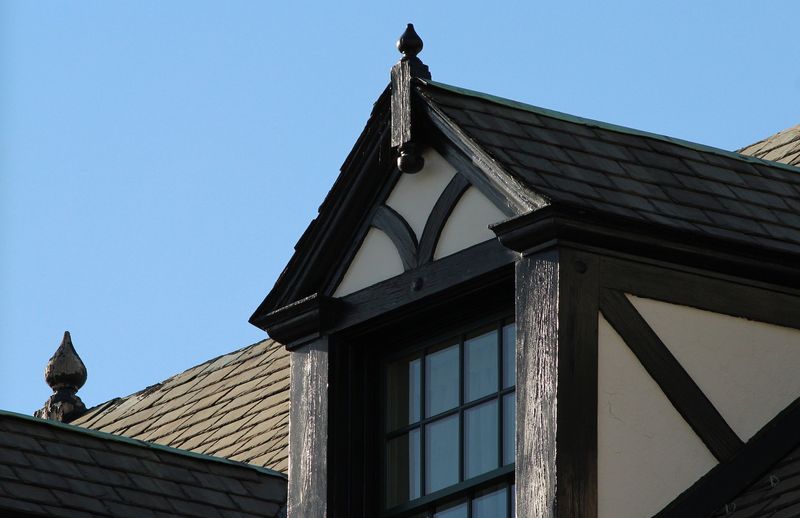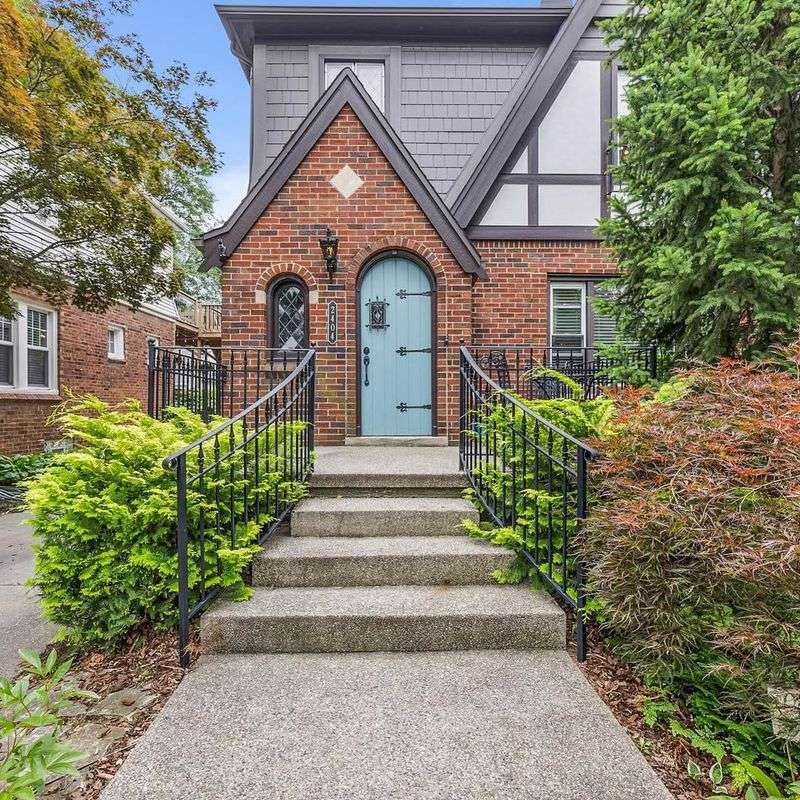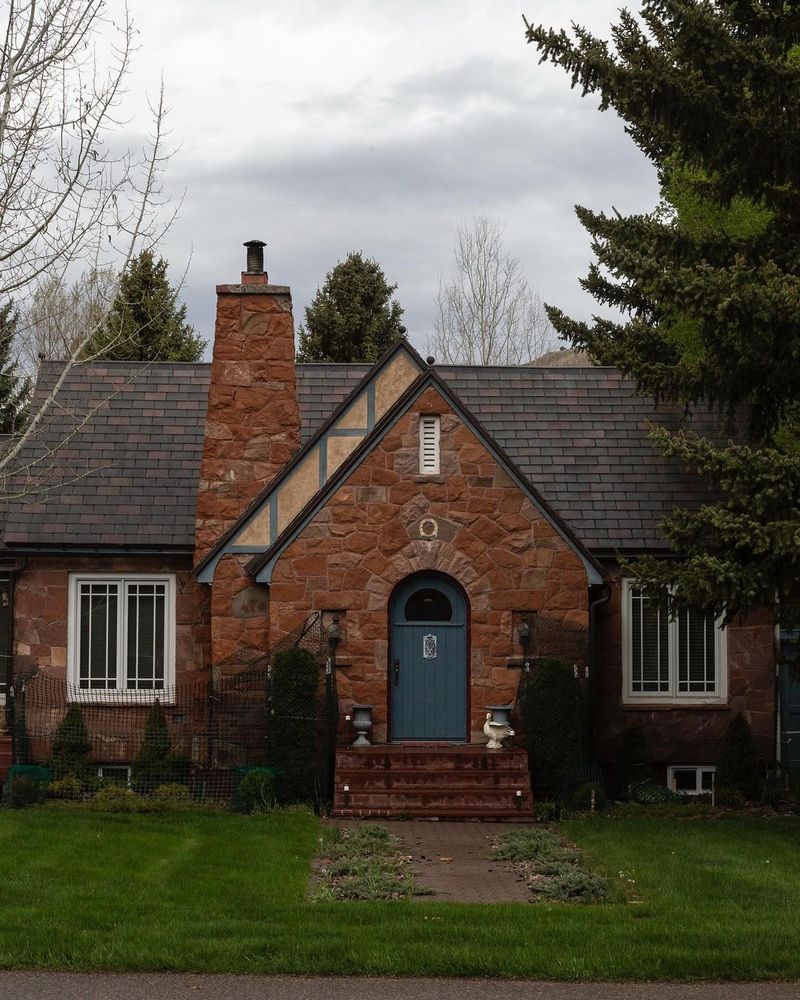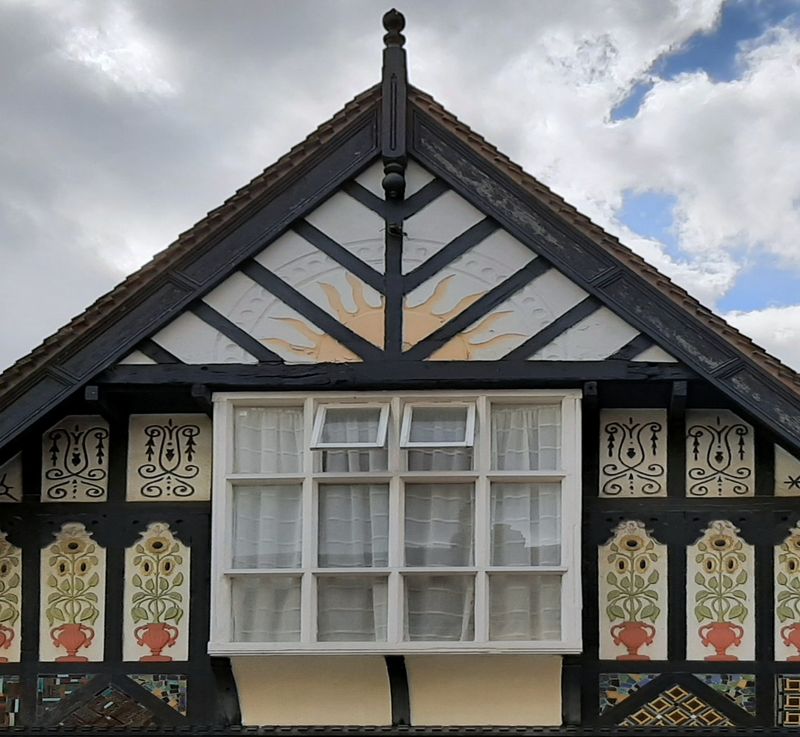Spotting a Tudor-style house is like uncovering a piece of history embedded in architecture. These homes, with their distinctive design and historical flair, stand out in any neighborhood.
As you stroll through various districts, or even just daydream about your dream home, recognizing the hallmarks of Tudor style can be both rewarding and entertaining.
Let me take you on a guided tour of these 22 distinct features that will make you a pro at identifying Tudor-style houses. Ready? Let’s begin!
1. High-Pitched Roofs
If you find yourself gazing upwards, admiring a roof that seems to reach for the sky, you’re likely looking at a Tudor home. These steeply pitched roofs, often with multiple gables, are not only a distinctive feature but also a practical design element for shedding rain and snow.
Furthermore, this roofing style contributes to the unique silhouette of Tudor homes, adding to their fairy-tale charm. So, next time you squint at a roofline against the clouds, take a moment to appreciate its architectural grace.
2. Decorative Half-Timbering
How often do you notice wooden beams crisscrossing on a house’s facade? This is a hallmark of Tudor architecture. Known as decorative half-timbering, these beams form intricate patterns that are not only structural but artistic.
In addition, this feature adds depth and character to the exterior, with its contrasting colors and textures. Picture it as the house’s way of wearing its own unique coat. Each angle offers something new to admire, making every glance a delightful discovery.
3. Tall, Narrow Windows
Consider the elegance of tall, narrow windows with leaded glass. These windows define Tudor homes, balancing light and privacy while enhancing the vertical alignment of the facade.
Moreover, they often feature diamond-patterned panes that cast enchanting shadows indoors. So, as you wander by, notice how the sunlight dances through these panes, creating a mosaic of light that whispers stories of the past.
In essence, these windows are like the eyes of the house, offering glimpses into its soul while reflecting the world outside.
4. Chimney Pots
Where there’s smoke, there’s often a Tudor chimney with eye-catching chimney pots. These ornate features not only crown the chimney but also serve functional purposes, aiding in drawing out smoke efficiently.
Chimney pots come in various shapes and sizes, adding a whimsical touch to the otherwise solid structure. Imagine them as the house’s hat collection, unique and varied. Next time you see these atop a home, enjoy the charming addition they make to the skyline.
5. Arched Doorways
Step through an arched doorway, and you’re likely stepping into a Tudor home. These doorways, often framed in stone or brick, create a welcoming entry that hints at the history within.
The gentle curve of the arch invites you in, offering a softer, more inviting transition from outside to inside. It’s the house’s way of saying, “Come in and explore.” So, next time you’re at a door with a curve, take a moment to appreciate the timeless elegance it brings.
6. Stucco and Brick Blend
Picture a facade where stucco meets brick in harmonious contrast. This blend is a signature look for Tudor homes, marrying texture with color in a visually striking way.
The interplay of materials not only adds to the aesthetic appeal but also speaks to the craftsmanship of the era. Each section tells a story, from rough-hewn bricks to smooth stucco surfaces, creating a tapestry of design that feels both rustic and refined.
7. Oriel Windows
Imagine a window that juts out, as if eager to catch a glimpse of the world. Oriel windows are a charming aspect of Tudor architecture, projecting from the upper floors and often adorned with decorative woodwork.
These windows provide a cozy nook inside while making the exterior more dynamic. They are like the house’s way of reaching out to its surroundings, inviting you to take a look from a different perspective.
8. Castellated Parapets
Think of a castle, and you’re likely imagining something with castellated parapets. Tudor homes sometimes feature these battlement-like structures along their rooflines, adding a touch of medieval flair.
These parapets not only serve as a decorative element but also enhance the silhouette of the house, making it stand out against the skyline. It’s like giving the house its own crown, regal and distinctive in every sense.
9. Massive Stone Work
Massive stone work often anchors Tudor-style homes, providing a sense of strength and permanence. These stones, carefully fitted together, create a rugged, timeless appeal.
Walking by, you might feel the weight of history in each stone, telling tales of ages past. This feature adds a layer of grandeur, rooting the house in the landscape as if it’s grown from the earth itself.
10. Wooden Shingles
Wooden shingles cloak Tudor roofs in a natural, earthy texture that complements the home’s storybook aesthetic. These shingles, often left to weather naturally, blend beautifully with the surrounding environment.
As the wood ages, it takes on a character all its own, with tones shifting subtly over time. The effect is one of warmth and authenticity, grounding the home in a sense of place and history.
11. Overhanging Second Stories
Overhanging second stories are a unique feature in Tudor-style homes. They create an intriguing profile, as if the upper level is peeking out to see the world below.
This architectural form not only maximizes space but also adds a touch of whimsy to the design. Supported by exposed wooden beams, these overhangs offer a playful contrast to the sturdy, grounded lower levels.
12. Decorative Brickwork
Admiring intricate brick patterns can lead you to a Tudor-style home. These decorative brickworks are a testament to the craftsmanship of the era, showcasing creativity and detail.
From herringbone to basket weave, each pattern tells a story of its own, adding texture and depth to the facade. It’s as if the house is wearing a garment of its own design, stylish and sophisticated.
13. Leaded Glass Windows
Leaded glass windows are like jewels embedded in the walls of Tudor homes. These diamond-patterned panes not only provide privacy but also add an element of artistry to the exterior.
The way light refracts through these panes creates a dance of shadows and highlights, setting the mood inside the home. As you pass by, notice how they twinkle in the sunlight, offering a glimpse of the magic within.
14. Large Fireplaces
Imagine settling in by a grand fireplace, its hearth wide enough to warm an entire room. Tudor homes often boast such large fireplaces, serving as the heart of the home.
These fireplaces, frequently made of stone or brick, provide a cozy gathering spot for families. The crackle of a fire adds to the ambiance, making the room feel like a haven on cold nights.
15. Slate Roofs
Slate roofs crown Tudor homes with elegance and durability. This natural stone not only protects but also enhances the aesthetic value of the house.
The subtle variations in color and texture of the slate create a dynamic roofline that catches the eye. Its longevity speaks to the timeless nature of Tudor architecture, standing strong against the elements while looking effortlessly beautiful.
16. Recessed Entryways
Recessed entryways draw you in with a sense of mystery and welcome. Set back from the facade, these entryways offer a moment of pause before you cross the threshold.
Framed by brick or stone, and often adorned with plants, they create a graceful transition from the outside world to the home’s interior. It’s an invitation to explore, setting the stage for what lies beyond.
17. Pointed Arches
Pointed arches add a medieval touch to Tudor-style homes, reminiscent of Gothic architecture. These arches, often seen over windows and doorways, create a sense of height and drama.
Their sharp lines and graceful curves offer a contrast to the solid materials of the house, drawing the eye upward. It’s a subtle nod to history, weaving the past into the present with elegance.
18. Intricate Door Hardware
Door hardware might seem like a small detail, but in Tudor homes, it’s a work of art. Intricate iron handles and hinges add character and craftsmanship to every entrance.
These pieces often feature elaborate designs that reflect the style of the house, providing both function and beauty. They’re like the jewelry of the home, offering a hint of the grandeur that awaits inside.
19. Decorative Finials
Decorative finials are like the exclamation points on Tudor homes. These ornamental features crown gables and roof peaks, adding a touch of whimsy and elegance.
Crafted in various shapes and sizes, they contribute to the overall character of the house, making the roofline more interesting. It’s as if the house is dressed for a special occasion, adorned with its finest accessories.
20. Wrought Iron Details
Wrought iron details add a touch of Gothic elegance to Tudor homes. From gates to railings, these ironworks are both sturdy and artistic.
The intricate patterns and shapes tell a story of craftsmanship, often featuring motifs that echo the home’s design. As you pass by, admire the way these details enhance the overall aesthetic, providing a timeless grace.
21. Brick Mullions
Brick mullions offer a robust alternative to wooden ones, adding a sturdy elegance to Tudor windows. These vertical elements divide the glass panes, contributing both structure and style.
Their solid presence frames the windows beautifully, blending seamlessly with the brick facade. It’s a subtle touch that enhances the architectural integrity of the home, creating a cohesive look that stands the test of time.
22. Pargeting
Pargeting is the art of creating decorative plasterwork on the exterior walls of Tudor homes. These intricate designs add texture and interest, transforming plain surfaces into works of art.
The patterns, often geometric or floral, are a testament to the artistry and skill of craftsmen. They invite closer inspection, offering a surprise to those who pause to admire the details. It’s the house’s way of sharing a secret, whispered through the artistry of its walls.

